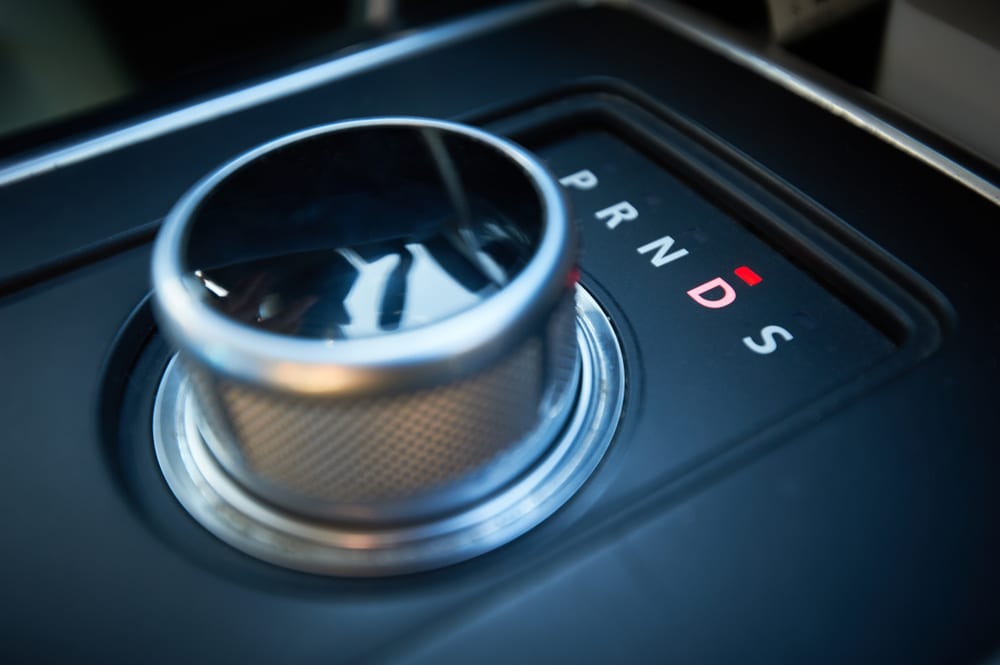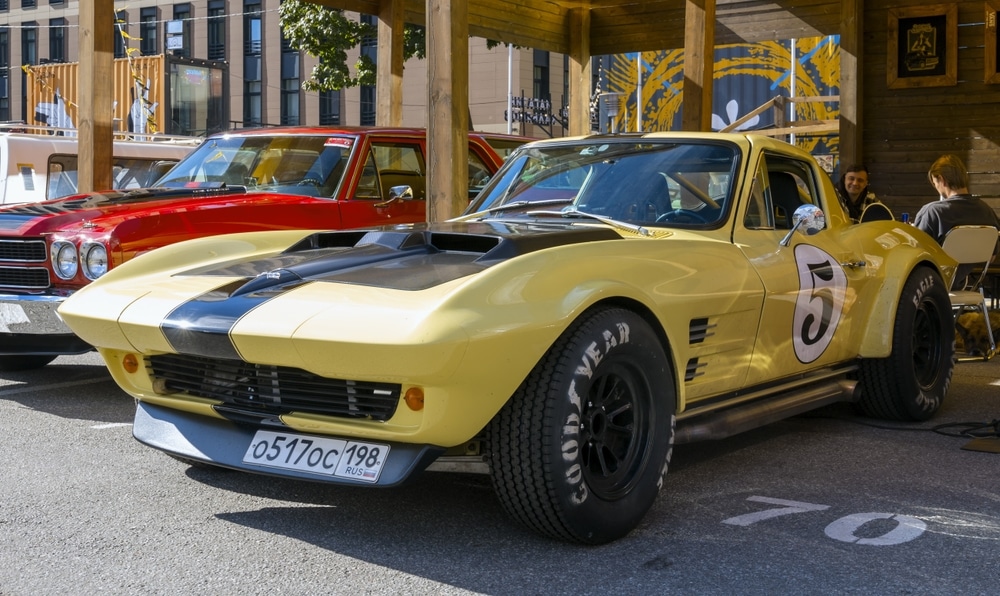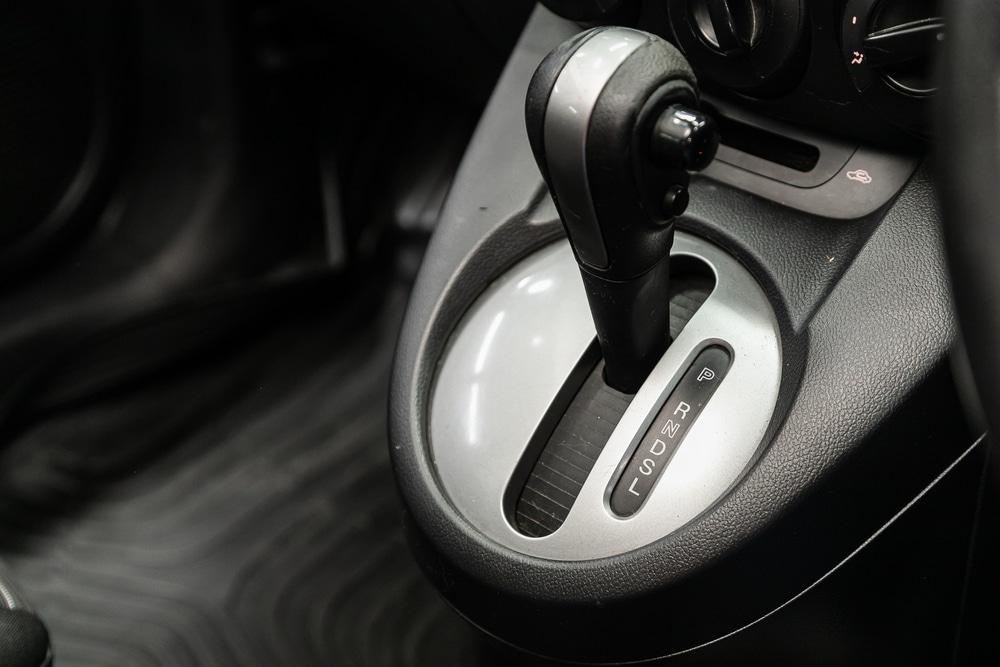Ever glanced at your gear shift and wondered about that mysterious “S” lurking there? You’re not alone. Many drivers scratch their heads over this enigmatic letter, unsure of its purpose or when to use it.

The “S” on your gear shift stands for “Sport mode,” a setting designed to enhance your vehicle’s performance and responsiveness. When engaged, sport mode alters your car’s transmission behavior, holding gears longer and downshifting more aggressively. It’s like giving your mild-mannered sedan a shot of espresso!
Curious about when to unleash this hidden power? Sport mode shines on winding roads or when you need that extra oomph for merging onto highways. Just remember, with great power comes… well, greater fuel consumption. But hey, sometimes you’ve got to live a little, right?
Key Takeaways
- Sport mode enhances vehicle performance by altering transmission behavior
- Use S mode for increased power on winding roads or highway merging
- Engaging sport mode typically results in higher fuel consumption
Understanding the S on Your Gearshift
The mysterious “S” on your gear selector isn’t just there to look pretty. It’s a powerful tool that can transform your driving experience from mundane to exhilarating with a simple shift.
Deciphering the Alphabet Soup
Ever felt like your car’s gearshift is playing alphabet soup with you? P, R, N, D, and then… S? Don’t worry, you’re not alone in this automotive guessing game.
The P stands for Park, R for Reverse, N for Neutral, and D for Drive. But what about that sneaky S? It’s not for “Super-fast” or “Snail-mode,” though that would be hilarious.
The S on a gear shift stands for Sport Mode. It’s like giving your car a shot of espresso – suddenly, it’s wide awake and ready to zoom!
The Meaning of S in Automatic Cars
In automatic cars, the S setting is your ticket to a more engaging drive. When you shift into S, you’re telling your car, “Let’s have some fun!”
Sport mode alters your car’s engine and transmission settings, making it more responsive. It’s like your car just chugged an energy drink – everything gets a bit more lively.
Your engine will rev higher before shifting, giving you quicker acceleration. It’s perfect for those times when you need to merge onto a busy highway or just want to feel a bit more oomph under the hood.
Remember, while S mode is fun, it’s not for everyday driving. It can increase fuel consumption, so use it wisely. Your wallet (and the planet) will thank you!
The Mechanics Behind S Mode

S mode takes your driving experience up a notch. It tweaks your car’s systems to deliver more oomph and responsiveness when you need it most.
How It Affects Engine and Transmission Dynamics
When you shift into S mode, your car’s computer gets a bit cheeky. It tells the transmission to hold onto gears longer, like a kid clinging to their favorite toy. This means higher RPMs before shifting, giving you more power at your fingertips.
Your throttle response also gets a caffeine boost. Tap the gas, and your car jumps like it’s been zapped. It’s perfect for those times when you need to show that minivan who’s boss.
But remember, with great power comes… well, you know the rest. S mode can be a bit of a fuel guzzler, so use it wisely unless you enjoy quality time with gas station attendants.
RPM and Performance Interplay
In S mode, your engine’s sweet spot shifts up the RPM range. It’s like your car’s been doing squats at the gym – more muscle, more endurance.
Higher RPMs mean more torque is available, giving you that push-you-back-in-your-seat feeling. It’s especially handy when you’re merging onto a highway or tackling a steep hill.
But don’t get too cocky. While S mode can make you feel like a race car driver, it won’t turn your family sedan into a Ferrari. Use it when you need that extra zip, but remember – with great power comes greater fuel consumption. Your wallet might start giving you the side-eye if you overdo it.
S Mode vs. Standard Driving Settings

S mode and standard driving settings offer distinct experiences behind the wheel. Your car’s performance and fuel efficiency can change dramatically depending on which you choose.
Fuel Economy and S Mode
You might want to think twice before flicking that S switch if you’re watching your wallet. Sport mode increases engine power and torque, but it’s not exactly friendly to your fuel gauge. Your engine will rev higher and stay in lower gears longer, guzzling gas like it’s going out of style.
In standard drive mode, your car is all about efficiency. It shifts up earlier, keeping those RPMs low and your mpg high. It’s like your car is wearing sensible shoes instead of track spikes.
Remember, sport mode is for fun, not frugality. Use it sparingly unless you enjoy intimate relationships with gas station attendants.
The Impact on Driving Experience
Engaging S mode is like giving your car a shot of espresso. You’ll feel increased throttle response and more aggressive shifting. The steering might tighten up, and in some cars, the suspension stiffens for better handling.
Standard drive mode is your everyday, comfy cruising setting. It’s smoother, quieter, and generally more relaxed. Perfect for your daily commute or long highway drives.
But when you need to overtake that slow-moving truck or tackle a winding mountain road, S mode is your best friend. Just don’t forget to switch back when you’re done playing race car driver!
Practical Applications of S Mode
Sport mode isn’t just for racing enthusiasts. It’s a handy feature that can enhance your driving experience in various situations. Let’s explore when and how to use it effectively.
Optimal Conditions for Engaging S Mode
Sport mode shines on twisty roads where you need extra responsiveness. Imagine you’re tackling a winding country road – that’s when you’ll appreciate the quicker acceleration and higher RPMs.
Overtaking becomes a breeze with S mode. You’ll have more power at your disposal, making it easier to zip past slower vehicles safely.
Fancy a bit of fun on your daily commute? Engage S mode and feel the difference. Just remember, it’s not all fun and games – your fuel consumption might take a hit.
When to Shift Back to Drive
You’ve had your fun, but now it’s time to calm things down. When you’re cruising on the highway, switch back to D. Your wallet will thank you for the improved fuel efficiency.
In heavy traffic, S mode can be a bit jumpy. You’ll find D mode gives you a smoother ride when you’re stuck in stop-and-go situations.
Wet or icy conditions? Best to stick with D mode. The increased power in S mode could make your car a bit too eager in slippery driving conditions.
Remember, S mode is a tool, not a permanent setting. Use it when you need that extra oomph, but don’t forget to shift back when regular driving resumes.
Advanced Features and Tips
Sport mode offers more than just a performance boost. It opens up a world of driving possibilities, allowing you to fine-tune your experience behind the wheel.
Paddle Shifters and Manual Control
Ever felt like a race car driver? Paddle shifters let you live out that fantasy. These nifty little levers behind your steering wheel give you manual control over gear changes, even in automatic cars.
Want to downshift for a quick burst of speed? Just pull the left paddle. Need to upshift? The right paddle’s got you covered. It’s like having a manual transmission without the pesky clutch pedal.
Many Toyotas come equipped with this feature. You’ll feel like you’re piloting a spaceship, but instead of dodging asteroids, you’re navigating rush hour traffic.
Understanding Your Vehicle’s Limits
Now, before you go all “Fast and Furious” on us, remember: with great power comes great responsibility. Sport mode pushes your car harder, so it’s crucial to know your vehicle’s limits.
Your engine will rev higher and work harder. That’s great for performance, but it can increase wear if you’re not careful. Keep an ear out for any unusual noises.
Most modern cars have a rev limiter to prevent engine damage. It’s like a stern parent telling you, “That’s enough, young man!” when you push too hard. Respect it.
Remember, sport mode isn’t meant for everyday driving. Use it wisely, and your car will thank you with years of thrilling performance.
Frequently Asked Questions
Gear shifts can be confusing, especially when it comes to those mysterious letters and symbols. Let’s clear up some common questions about what they all mean and how to use them properly.
What’s that S gear for and when should I toy with it?
The S on your gear shift stands for Sport mode. It’s perfect for when you’re feeling a bit frisky and want more oomph from your ride. In Sport mode, your car holds gears longer and revs higher, giving you zippier acceleration.
Use it when you’re merging onto highways or tackling twisty mountain roads. Just remember, it’s not meant for your daily grocery run – unless you really need to beat that granny to the last carton of eggs.
Is there a secret behind the plus and minus on the gear shift or is it just there for show?
Those plus and minus symbols aren’t just fancy decoration. They’re for manual shifting in an automatic car. Think of it as your chance to play race car driver without the helmet hair.
The plus lets you upshift, while the minus downshifts. It’s handy when you need more control, like when you’re going downhill and want to use engine braking.
Curious about the B on the gear shift—am I prepping for a spelling bee or what?
No spelling skills required here! The B usually stands for “Brake” or “Engine Brake.” It’s especially common in hybrid and electric vehicles.
When engaged, it increases regenerative braking, helping to slow the car and charge the battery. It’s like hitting two birds with one stone – you save your brakes and juice up your battery.
Can you switch from D to S while cruising, or is that a no-no?
Good news, speed racer! You can absolutely switch from D to S while driving. It won’t hurt your car or send you spinning off the road.
Just don’t mash the gas pedal while making the switch. Ease into it, and you’ll feel the difference as your car perks up like it just chugged an espresso.
When driving an automatic, do I keep it simple in D or get sporty in S?
For your everyday commute or casual driving, D (Drive) is your go-to gear. It’s efficient and keeps things smooth, perfect for sipping coffee without spilling.
Save S (Sport) for when you need extra pep in your step. It’s great for merging, passing, or when you just want to feel like you’re in a Fast and Furious movie – minus the explosions.
How exactly does the L gear function – is it for lounging or lugging heavy loads?
L stands for “Low,” not “Lounging” (though that would be a cool feature). It keeps your car in a lower gear, which is handy for a few situations.
Use L when you’re towing something heavy or climbing steep hills. It gives you more torque and helps prevent your transmission from constantly hunting for the right gear. It’s also great for descending long, steep hills to help with engine braking.
